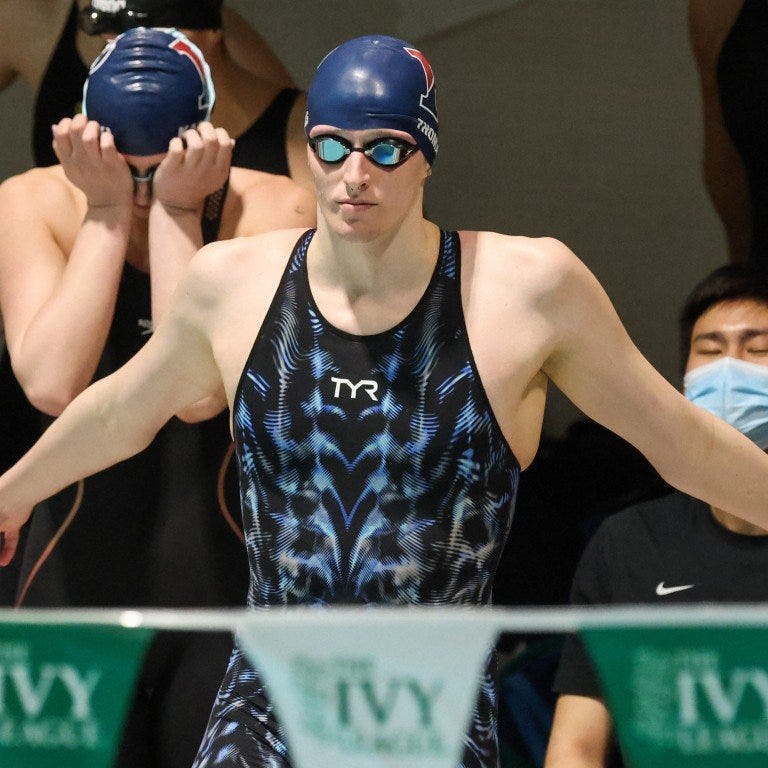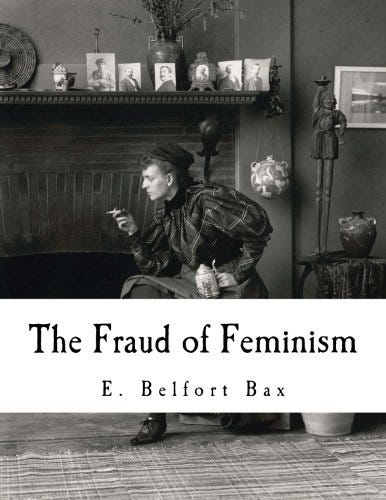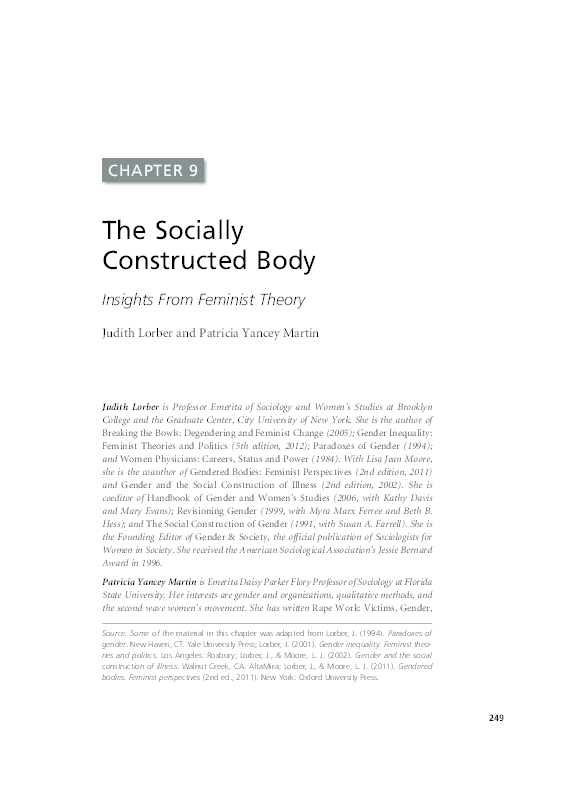Lia Thomas is the Child of Feminism
The decision by the International Swimming Federation to ban post-pubescent male-born swimmers from women’s competitions is one victory in an ongoing war that few feminists will admit they started.
As the twilight zone exchange between U.S. Senator Marsha Blackburn and Supreme Court nominee Ketanji Brown Jackson illustrated, defining “woman” has become taboo, and even (or especially) deference to biology won’t settle the matter. Whether it be trans-woman bruiser Fallon Fox in mixed martial arts fighting, intersex athlete Caster Semenya in middle-distance running, former male racer Emily Bridges in competitive cycling, or mammoth swimmer Lia Thomas in collegiate freestyle events, biologically male athletes have been increasingly competing in women’s sports as decades of feminist theorizing about the “socially constructed” nature of sex differences bear their bitter fruit.
Many women are angry about the obvious unfairness of allowing men, with their significantly greater muscle mass, larger bones, tougher ligaments, and more efficient cardiovascular system, to compete against women in high-level sport. Annabelle Rutledge, the national director for Young Women for America, sees women being “displaced” by men in collegiate sport. The president of Concerned Women of America, Penny Nance, worries that “the future of women’s sports is at risk.” Watching men pushing women off medal podiums has left some lifelong Democrats feeling “politically homeless,” with some even claiming that the trans movement is in essence a return to patriarchal tyranny.
Such feisty statements might once have garnered unanimous agreement from women’s rights advocates and academic feminists across the western world—but no longer. Now many, perhaps even most, feminist leaders seem willing to applaud biologically male persons muscling in on women’s events according to increasingly abstruse notions of gender dissidence. The trans phenomenon is merely the most visible example of a fundamental incoherence at the heart of much modern feminism, an incoherence that has been simmering under the surface for at least the last century.
Disavowal of biological women was evident in a recently published opinion piece for NBC News by Purdue University’s resident expert on gender and sport, Dr. Cheryl Cooky, who has made her academic career arguing that female athletes and women’s sports have been given short shrift by a sexist mainstream news media. In her recent article, however, Cooky has abandoned her core constituency to argue that supporters of women’s athletics should celebrate the presence of a biologically-male swimmer in women’s races as a barrier-breaking victory.
Cooky’s article takes the now doctrinaire feminist position that there is nothing biological about sex outside of a few manipulable hormones, radically downplaying the extent to which muscle mass or bone size equate with athletic prowess. It is enough for her that Thomas has been taking medication to suppress testosterone for the past year. Cooky’s contention is that defining women as, on average, smaller, lighter, and less strong than men is an age-old form of bigotry that trans women help to oppose. “The presumed physical inferiority of girls and women,” she asserts, “has justified, legitimated and excused the unequal treatment of female athletes.” The case of Lia Thomas, then, should be seized as an opportunity to resist rigid ideas about womanhood.
It’s easy to see how Cooky’s feminist position mandates celebration of Thomas as a bold “first” for women’s swimming, less easy to see why, given her reasoning, there should be female sports categories at all. Here is the bewildering impasse elite feminist theorizing has arrived at in its repeated claim that one of the greatest threats to women today is the assumption that there is such a thing as a woman.
The never-never land of feminist argument has a long history. From its beginnings in the nineteenth century, feminism tended to employ two competing claims about women, one advocating equality on the basis that women and men are essentially alike—and that therefore it is unjust to exclude women from any male domain—and the other emphasizing women’s special needs and rights as a victimized group.
As far back as 1913, in his prescient book The Fraud of Feminism, British barrister Ernest Belfort Bax noted the logical tension between what he termed “political feminism,” which declared women just as good as men, and “sentimental feminism,” which highlighted women’s sex-specific vulnerabilities. Both assumptions tended to appear together in women’s rights discussions, but anyone pointing out their incompatibility was shouted down as an enemy of women.
Within the modern feminist movement, this tension between advocacy for equality and championing of special rights has persisted, exacerbated by the increasingly popular tendency to claim that there is no such thing as femaleness outside of the idea of femaleness. “One is not born, but rather becomes, a woman,” according to Simone de Beauvoir (1949), and most feminists who came after her, including Kate Millett in her landmark Sexual Politics (1970), advocated some version of what came to be called the “social constructionist” position, a feminist version of Descartes along the lines of “Patriarchy thinks, therefore woman is.” By the time of Judith Butler’s 1990 magnum opus Gender Trouble, it was firmly established in feminist circles that sex itself—the distinction between male and female—was a “performance” rather than an objective reality.
This constructionist position strained at the seams when the subject was male and female bodies in sports competition, but even here, mainstream feminist experts asserted a primarily social rather than biological thesis. A chapter in a 2011 college textbook (Illuminating Social Life) called “The Socially Constructed Body” by two American professors of sociology, Judith Lorber and Patricia Yancey Martin, showcased the lengths to which such theories could be taken in addressing alleged sexism.
Lorber and Martin were adamant that female athletes are held back from performing at men’s level primarily because of prejudice and lack of institutional support, not due to any biological particularities. They even made the extraordinary claim that “Women and men are not allowed to compete against each other, so actual comparisons of men’s and women’s […] prowess are rarely made,” predicting that within the next fifty years, female runners may well beat out male competitors in the Marathon because women are at last coming to believe they can.
Lorber and Martin admitted that their gender-equal utopia had not yet arrived, and that much more needed to be done to enable women to compete on a level playing field with men. In their assertion of an equality needing still to be realized, they blended the two strands of advocacy Bax had noted.
Such has been the dominant feminist emphasis—and the fine line walked—in discussion of women’s athletics, where the refusal to admit sex differences has been coupled with complaints about sexism. In 2016, the afore-mentioned Professor Cheryl Cooky presented a TEDx Talk decrying what she claimed to be “sustained and systematic” discrimination against female athletes, manifested when journalists covered men’s sport more enthusiastically and respectfully. Cooky denied that female athletes and sports teams received less or different coverage because audience interest was lower and male athletes stronger, faster, and more exciting to watch; on the contrary, she alleged, viewer interest was lower only because there was inequitable coverage.
Then along came trans, exposing the contradiction at the base of feminist social constructionism: If women’s physical inferiority to men in sport is merely a sexist myth to be remedied by financial support and positive media coverage, then there can be no rationale for denying the right to compete in women’s sport of a Lia Thomas or of any male athlete undergoing hormone therapy.
Why, then, have women’s athletics at all? If designating bodies as male and female is primarily a sexist society’s means to discriminate against women, why not simply celebrate all athletes, opening competition and medal pursuits to any of the 72 putative genders, regardless of chromosomes, musculature, bone size, sex organs and so on? Isn’t it sexist to isolate testosterone—itself a social construct, surely!—as the determining factor, given the wide range of other characteristics that contribute to an athlete’s competitive edge?
Yet on the other side, if women are fundamentally different from men, different in a way that no amount of encouragement, financial support, or right thinking can correct, then what is the point of insisting that women be equally represented in formerly male domains such as policing, fire-fighting, and soldiering, where physiological as well as emotional and mental fitness favor men’s evolutionary strengths? How can we rationalize protecting female athletes on the basis that they can never fairly compete against male bodies—even male bodies trying to become like female bodies—while at the same time insisting that the military and other domains will not be deleteriously affected by the mass integration of physically weaker women?
If women aren’t “equal” to men physically, what benefit is served by pretending they are? The same women who are angry now that women’s physical reality is not being recognized have been mostly silent on these latter questions, accepting forced equality and decades-long social engineering programs as a righteous blow for women’s rights. Which is it, ladies? Are women different from men, or not?
Whatever the ultimate impact of trans athletes on women’s sport—and my sympathies are with female athletes losing out to biological male competitors—the debate provides an illuminating window onto the denial of reality and self-contradictory bafflegab that has been allowed to influence public policy, key institutions, and social life for far too long.











Even more... Feminism has created the "trans women". A new generation of boys have been raised by feminist women to hate themselves and their toxic-masculinity. They know that the only way they can be good people, accepted by their mothers and feminist peers is to deny their maleness. A sad state of affairs.
This piece is spot on the money. It is feminism that has caused this - but more to the point it is the social constructionist thinking within feminism that has caused it. I really feel like the working 'definition of woman' that Big-F Feminism had been using for 50 years was 'A human who had been developmentally suppressed by the patriarchy to such an extent that they have developed 'female' a syndrome characterized by the growth of breasts and a large number of mental illnesses'
The trouble with social constructionism is that it's sort of exploring the negative space of human development. Social constructionism ignores our humanity, it's just mapping out the scope and limits of human susceptibility to influence, without clearly defining 'human'. A social constructionist is kind of like a sculptor who does not believe that clay exists.